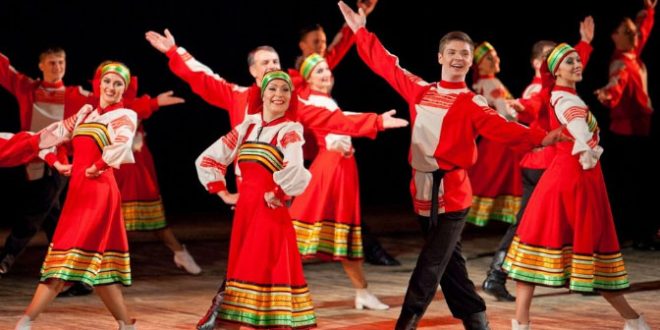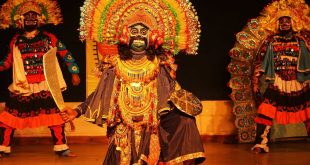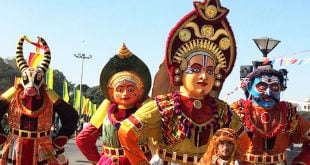Russian Folk Dance
Russian Folk Dance refers to a rich and vibrant cultural tradition of traditional dance forms that have been passed down through generations in Russia. These dances are an integral part of Russian culture and history, reflecting the country’s diverse regional influences and customs. From the lively and energetic movements of dances like Kalinka and Hopak to the grace and elegance of Barynya, Russian Folk Dance continues to captivate audiences worldwide with its colorful costumes, rhythmic music, and storytelling elements.
Traditional Russian Folk Dances
Russian Folk Dance encompasses a variety of captivating and culturally significant traditional dances that have been preserved and cherished in Russia for centuries. These dances, such as Barynya, Troika, Kalinka, Hopak, Khorovod, and Kazachok, showcase the rich heritage and regional diversity of Russia, each characterized by unique movements, music, and costumes. Whether expressing joy, love, or celebratory events, these traditional Russian Folk Dances continue to enchant audiences globally and remain an essential part of the country’s cultural identity.
Barynya
Barynya is a captivating and iconic Russian Folk Dance that holds a significant place in the country’s cultural heritage. This traditional dance is known for its energetic and spirited movements, often performed by a group of dancers, both male and female. The term “Barynya” originally referred to a noblewoman in Russian society, and the dance itself evolved from imitating the gestures and demeanor of these aristocratic women.
In the Barynya dance, performers showcase a blend of grace, charm, and playfulness, reflecting the vibrant spirit of the Russian people. The dancers often wear colorful and ornate costumes that add to the visual spectacle of the performance. The music accompanying the Barynya is typically lively and fast-paced, further enhancing the excitement of the dance.
Throughout history, Barynya has remained a popular form of entertainment at various festive occasions, including weddings, festivals, and other social gatherings. The dance not only serves as a form of artistic expression but also represents the deep-rooted cultural traditions and values of the Russian people.
Today, Barynya continues to be celebrated and performed both in Russia and around the world, captivating audiences with its joyful and exuberant nature. Its enduring popularity is a testament to the enduring allure of Russian Folk Dance as an integral part of the country’s cultural tapestry.
Troika
Troika is a captivating and iconic Russian Folk Dance that holds a significant place in the country’s cultural heritage. The term “Troika” translates to “three” in Russian, and the dance is named after the famous three-horse-drawn sleigh that was historically used as a mode of transportation in Russia during the winter months.
The Troika dance, like the sleigh it is named after, is known for its fast and rhythmic movements. Dancers imitate the swift and graceful motions of the horses pulling the sleigh, creating an exhilarating and visually stunning performance. The dance is often accompanied by lively music that complements the energetic and dynamic nature of the dance.
Throughout history, Troika has been a popular and beloved form of entertainment at various festive occasions, especially during winter celebrations and New Year’s festivities. It reflects the connection of the Russian people with their environment and the importance of horses in their traditional way of life.
The enduring popularity of Troika as a Russian Folk Dance is a testament to its cultural significance and the way it continues to captivate audiences, both in Russia and around the world. Its portrayal of the country’s historical heritage and its expressive and joyful movements make it a cherished part of the rich tapestry of Russian culture.
Kalinka
Kalinka is a beloved and iconic Russian Folk Dance that holds a special place in the hearts of both Russians and international audiences alike. The word “Kalinka” refers to the Russian name for the viburnum plant, and the dance is named after this small, vibrant, and berry-laden shrub.
The Kalinka dance is known for its infectious and lively rhythm, symbolizing the joy and exuberance of the Russian people. Dancers perform with a combination of quick, intricate footwork and graceful arm movements, creating a mesmerizing and spirited performance.
Accompanied by the famous song “Kalinka,” the dance embodies the spirit of Russian culture with its catchy melody and lyrics that celebrate the beauty of nature and love. The lyrics and music perfectly complement the movements of the dance, adding a touch of sentiment and emotion to the lively performance.
Kalinka has become an enduring symbol of Russian identity and is frequently performed at cultural events, festivals, and celebrations across the country. Its universal appeal has also made it a popular choice for international dance showcases, where it continues to showcase the richness and vibrancy of Russian Folk Dance on a global stage. The dance’s joyful and expressive nature has ensured its place as a cherished part of Russia’s cultural heritage, exemplifying the enduring allure of Russian Folk Dance as a source of national pride and artistic expression.
Hopak
Russian Folk Dance is known for its diverse and captivating forms, and one of the most dynamic and exuberant dances in this tradition is the Hopak. The Hopak, a traditional Ukrainian folk dance, has become an integral part of Russian culture, celebrated for its energetic and acrobatic movements that showcase the strength, agility, and spirit of the dancers.
Originating in Ukraine, the Hopak dance is characterized by its fast tempo, intricate footwork, and vibrant jumps and leaps. Dancers perform with high energy, executing impressive spins, squat kicks, and other acrobatic feats that demand exceptional skill and athleticism. The dance’s name, “Hopak,” is derived from the Ukrainian word “hopaty,” which means “to jump.”
The Hopak is often performed in groups, with both male and female dancers participating. The choreography typically involves spirited interactions between dancers, embodying themes of courtship, competition, and celebration. The movements, accompanied by traditional Ukrainian music, express the joy, camaraderie, and pride of the Ukrainian and Russian people.
Over the years, the Hopak has transcended its Ukrainian roots and become popular throughout Russia and other parts of the world with significant Slavic cultural influence. It is frequently featured in cultural festivals, stage performances, and national celebrations, where it continues to captivate audiences with its electrifying energy and visual spectacle.
The Hopak dance’s enduring appeal lies in its ability to evoke a sense of national identity and unity, reflecting the shared cultural heritage of the Ukrainian and Russian people. It serves as a testament to the power of dance as a means of expressing cultural pride and connecting people across borders. As a cherished part of Russian Folk Dance, the Hopak continues to thrive, preserving and promoting the rich traditions of the region and leaving a lasting impression on all who witness its exhilarating display of talent and spirit.
Khorovod
Russian Folk Dance encompasses a diverse array of traditional dances, and one of the enchanting forms within this rich tapestry is the Khorovod. The Khorovod is a communal circle dance that holds deep cultural significance in Russian and Slavic traditions, symbolizing unity, harmony, and celebration among the participants.
In the Khorovod dance, participants form a circle, holding hands, and move in a coordinated manner, often stepping sideways or performing graceful, synchronized movements. The circular formation represents a sense of togetherness and collective spirit, reflecting the close-knit nature of traditional Russian communities.
Accompanied by vibrant music, which typically includes singing and rhythmic clapping, the Khorovod exudes a sense of joy and festivity. The lyrics of the songs often speak of nature, love, and life’s joys and sorrows, providing a poetic backdrop to the dance’s graceful and flowing motions.
The Khorovod dance is deeply rooted in the ancient pagan rituals of the Slavic people, where it was performed during various seasonal festivals and significant life events. With the advent of Christianity in the region, the dance seamlessly integrated into Christian celebrations, such as weddings and religious holidays.
Today, the Khorovod remains a cherished part of Russian cultural events, where it is performed at weddings, folk festivals, and other communal gatherings. The dance continues to serve as a vivid expression of Russia’s communal identity and the enduring spirit of its people.
Through the captivating movements and melodic sounds of the Khorovod, Russian Folk Dance captures the essence of the country’s cultural heritage, connecting the past with the present and perpetuating the sense of unity and joy that has defined this enchanting art form for generations.
Kazachok
Russian Folk Dance encompasses a vibrant variety of traditional dances, and one of the most renowned and spirited dances within this repertoire is the Kazachok. The Kazachok, also known as the Cossack Dance, has its origins in the traditional dance forms of the Cossack people, who were skilled horsemen and warriors from the vast plains of Russia and Ukraine.
The Kazachok is characterized by its dynamic and lively movements, symbolizing the bravery, agility, and strength of the Cossack warriors. Dancers perform with exuberance, showcasing impressive squat kicks, high leaps, and intricate footwork that demands both skill and stamina. The dance’s name, “Kazachok,” is derived from the Russian word “Kazak,” which means “Cossack.”
Typically performed by male dancers, the Kazachok conveys a sense of masculinity and boldness, while also embodying the free-spirited and adventurous nature of the Cossack culture. The movements are often accompanied by rhythmic and rousing music, creating an electrifying atmosphere that captivates audiences.
Over time, the Kazachok has become a popular and iconic representation of Russian and Ukrainian folk traditions, extending its appeal beyond the Cossack communities to broader audiences both nationally and internationally. It is frequently featured in cultural festivals, stage performances, and dance showcases, where its fiery and dynamic energy continues to leave a lasting impression.
As an essential part of Russian Folk Dance, the Kazachok serves as a powerful testament to the valor, heritage, and pride of the Cossack people, reflecting the enduring allure and cultural significance of this captivating dance form within the broader tapestry of Russian traditions.
Regional Variations of Russian Folk Dance
Russian Folk Dance exhibits a rich tapestry of regional variations across the vast expanse of Russia. These regional variations add diverse flavors and unique characteristics to the traditional dance forms, reflecting the distinct cultural influences and customs of different areas within the country. From the lively and spirited Cossack dances of the southern regions to the graceful and elegant dances of the northern territories, the regional variations of Russian Folk Dance offer a captivating insight into the rich cultural heritage and geographic diversity of this enchanting art form.
Cossack Dances
Russian Folk Dance encompasses a captivating array of regional variations, and one of the most dynamic and iconic forms within this repertoire is the Cossack Dances. Originating from the Cossack communities in the southern regions of Russia and Ukraine, these dances are deeply intertwined with the rich cultural heritage of the Cossack people, who were known for their skills as horsemen, warriors, and farmers.
Cossack Dances are characterized by their vibrant and energetic movements, reflecting the spirit of the Cossack lifestyle and traditions. Dancers showcase impressive leaps, high kicks, and intricate footwork, often performed with precision and agility. The dance movements are reminiscent of the Cossack’s martial skills, and they embody a sense of bravery, strength, and camaraderie.
Traditionally performed by male dancers, Cossack Dances also include captivating group formations and interactions, adding a sense of unity and solidarity among the performers. The accompanying music is typically fast-paced and rhythmic, enhancing the electrifying atmosphere of the dance and inspiring a sense of pride and excitement.
The Cossack Dances have garnered international recognition and appreciation, captivating audiences worldwide with their athletic prowess and spirited performances. As an integral part of Russian Folk Dance, these dances preserve the cultural legacy of the Cossack people, celebrating their history, traditions, and the enduring spirit that has made them an iconic symbol of Russian culture.
Siberian Dances
Russian Folk Dance encompasses a diverse range of regional variations, and among them, Siberian Dances stand out as a fascinating and unique form within the repertoire. Hailing from the vast and rugged landscapes of Siberia, these dances are deeply influenced by the nomadic and indigenous cultures of the region.
Siberian Dances are characterized by their connection to nature and the environment, reflecting the traditional lifestyle and beliefs of the Siberian people. Dancers often mimic the movements of animals, such as birds or reindeer, as well as imitate the swaying of trees and the flow of rivers, creating a mesmerizing and evocative performance.
The dance movements in Siberian Dances are often graceful and flowing, embodying a sense of harmony with the natural world. Traditional Siberian costumes, adorned with intricate patterns and designs, add to the visual spectacle of the performance and reflect the cultural richness of the region.
Music plays a significant role in Siberian Dances, with traditional instruments like the khomus (jaw harp) and flute accompanying the dance movements. The melodies evoke the spirit of the Siberian landscapes and folklore, further immersing the audience in the unique cultural tapestry of the region.
Siberian Dances provide a captivating glimpse into the rich cultural traditions and ancient practices of the Siberian people. As a vital component of Russian Folk Dance, these dances continue to honor and preserve the indigenous heritage of Siberia, showcasing the profound connection between the land, its people, and their centuries-old artistic expressions.
Ukrainian-Russian Dance Fusion
Russian Folk Dance has a fascinating and dynamic aspect known as Ukrainian-Russian Dance Fusion, which represents a captivating blend of traditional dance styles from both Ukraine and Russia. This unique fusion emerged from the historical and cultural interactions between the two neighboring countries, where elements of each nation’s folk dances were creatively intertwined to create a new and distinct art form.
Ukrainian-Russian Dance Fusion showcases a harmonious integration of movements, music, and costumes, combining the grace and elegance of Ukrainian dances with the lively and spirited elements of Russian dances. Dancers seamlessly transition between the two dance styles, exemplifying the interconnectedness and shared heritage of the Ukrainian and Russian cultures.
The fusion of Ukrainian and Russian folk elements often symbolizes unity and cooperation, serving as a testament to the deep historical and cultural bonds between the two nations. Performances of Ukrainian-Russian Dance Fusion not only celebrate the shared traditions but also highlight the diverse and multifaceted nature of the broader Russian Folk Dance tradition.
As this fusion dance continues to evolve and adapt with the changing times, it remains a vibrant representation of the cross-cultural influences that have shaped the arts in this region. Ukrainian-Russian Dance Fusion serves as a living testament to the enduring power and versatility of Russian Folk Dance, continually captivating audiences with its artistry, diversity, and celebration of shared heritage.
Costumes and Music in Russian Folk Dance
Russian Folk Dance is a captivating and diverse art form that showcases not only a wide array of dance movements but also intricate and vibrant costumes accompanied by rhythmic and evocative music. The costumes and music play a crucial role in enhancing the overall experience of Russian Folk Dance, reflecting the rich cultural heritage and historical influences of the different regions within Russia.
Costumes in Russian Folk Dance are elaborate, colorful, and reflective of the traditions and customs of the specific dance form and the region it represents. They often incorporate intricate embroidery, beads, sequins, and other ornate decorations. The design of the costumes may vary significantly depending on the dance’s theme, be it celebratory, romantic, or storytelling in nature. For example, in dances like Barynya, female dancers wear flowing dresses adorned with flower patterns, while male dancers don embroidered shirts and high boots, exuding a sense of elegance and grace.
The costumes in Russian Folk Dance are not only visually stunning but also functional, allowing the dancers to move with ease and grace while accentuating the rhythmic movements. They add a sense of spectacle to the performance, drawing the audience into the cultural narrative being portrayed.
As for the music, it forms the heartbeat of Russian Folk Dance. The traditional melodies, often accompanied by lively and energetic singing or instrumental music, provide the perfect backdrop for the dancers to express themselves and tell stories through their movements. The music in Russian Folk Dance varies significantly based on the region, and each dance may have its distinct rhythm and tempo that resonates with the dance’s theme and emotions.
The instruments used in Russian Folk Dance music include the balalaika, accordion, tambourine, and various percussion instruments, creating a dynamic and rhythmic soundscape. The music’s infectious and emotive qualities further immerse the audience in the cultural experience, making them an integral part of the performance.
In conclusion, costumes and music in Russian Folk Dance are not just decorative elements but are essential components that elevate the art form to a mesmerizing and captivating spectacle. They serve as powerful mediums through which the rich cultural heritage and diverse traditions of Russia are vividly showcased, leaving a lasting impression on audiences worldwide and solidifying Russian Folk Dance as a cherished and enduring cultural treasure.
Influences of Russian Folk Dance in Culture
Russian Folk Dance has had a profound influence on the culture of Russia and beyond, permeating various aspects of society and leaving a lasting impact on art, music, traditions, and even national identity. The dance form, with its rich history and diverse regional variations, has been an integral part of Russian cultural expression for centuries, shaping the way people interact, celebrate, and express themselves.
One of the significant influences of Russian Folk Dance in culture is its role in storytelling and preserving historical narratives. Many folk dances are deeply rooted in ancient folklore, reflecting the tales of heroic deeds, love stories, and everyday life experiences. These dances serve as a cultural repository, passing down traditions and beliefs from one generation to another. Through these dances, the cultural heritage and values of Russia are not only preserved but also celebrated, instilling a sense of pride and shared identity among the people.
Russian Folk Dance has also played a vital role in fostering a sense of community and unity. The communal dances, such as Khorovod, bring people together in joyful celebration, reinforcing the bonds between individuals and their shared cultural roots. The dances often accompany important life events like weddings, harvest festivals, and religious ceremonies, adding a sense of festivity and emotional connection to these occasions.
In addition to its cultural significance, Russian Folk Dance has had a significant impact on the development of other art forms, most notably music and visual arts. The rhythmic and melodic elements of the dance music have inspired composers and musicians to incorporate folk motifs into classical and contemporary compositions. Similarly, the elaborate and colorful costumes of the dancers have influenced fashion and costume design, both within Russia and internationally.
Furthermore, Russian Folk Dance has served as a source of inspiration for theatrical performances and dance forms worldwide. The graceful movements and expressive storytelling of Russian dances have found their way onto the stages of ballet and modern dance, enriching the global dance repertoire and influencing choreographers worldwide.
The enduring appeal of Russian Folk Dance can be seen in its continued popularity in contemporary culture. Traditional dance ensembles and performances continue to thrive, attracting audiences from all walks of life. Moreover, Russian Folk Dance festivals and competitions celebrate the art form, encouraging its preservation and evolution for future generations.
In conclusion, Russian Folk Dance has left an indelible mark on the cultural fabric of Russia and has acted as a unifying force that connects people to their heritage. Its influence can be felt in various artistic, social, and ceremonial aspects of Russian culture, reaffirming its significance as a cherished and timeless expression of the nation’s spirit and traditions.
Gallery
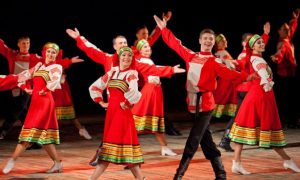
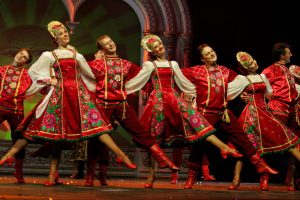
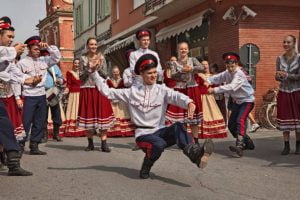

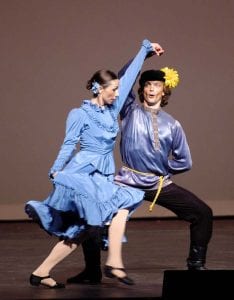
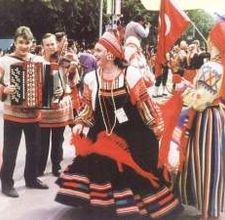
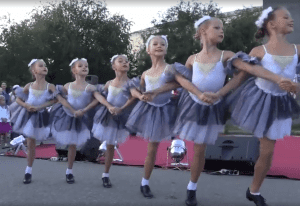
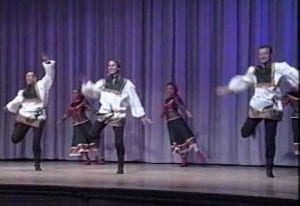
Videos
Frequently asked questions about Russian Folk Dance
What is Russian Folk Dance?
Russian Folk Dance refers to a diverse and captivating collection of traditional dance forms that have been passed down through generations in Russia. These dances are an integral part of Russian culture, reflecting the country’s diverse regional influences and customs.
What are some famous Russian Folk Dances?
Some famous Russian Folk Dances include Barynya, Troika, Kalinka, Hopak, Khorovod, and Kazachok. Each dance has its distinct movements, music, and cultural significance.
What role do costumes play in Russian Folk Dance?
Costumes in Russian Folk Dance are elaborate and colorful, reflecting the traditions and customs of the specific dance form and the region it represents. They enhance the visual spectacle of the performance and often add a touch of sentiment and emotion to the dance.
How does music contribute to Russian Folk Dance performances?
Music is a vital component of Russian Folk Dance, providing the rhythmic and melodic backdrop for the dancers to express themselves. Traditional instruments like the balalaika, accordion, and tambourine are used to create a dynamic and energetic soundscape that complements the movements and emotions conveyed through the dance.
What cultural significance does Russian Folk Dance hold?
Russian Folk Dance holds significant cultural importance as it preserves the country’s cultural heritage, traditions, and values. It serves as a means of storytelling, passing down historical narratives and folklore from one generation to another, fostering a sense of community, and celebrating shared identity among the Russian people. Additionally, its influence can be seen in other art forms, music, and fashion, both within Russia and internationally.
 FolkDanceWorld.Com International Folk Dances
FolkDanceWorld.Com International Folk Dances
